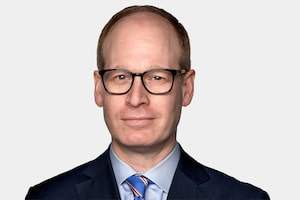The day after Adolf Hitler invaded Poland and started the Second World War, the British government was still puzzling over its response. On the evening of Sept. 2, 1939, Conservative prime minister Neville Chamberlain rose in the House of Commons. It was by then clear to Parliament, and the country, that Britain had to go to war. But the PM delivered a short and prevaricating statement, whose weakness stunned MPs, not least those on his own side of the aisle.
Then Arthur Greenwood began to speak for the opposition Labour Party.
He was interrupted by a shout from the government benches.
“Speak for England, Arthur!”
The cry captured the mood in the room, and the nation. Leo Amery, a leading Conservative, was indicting his own government, and calling on the opposition to say what his own leader had not. He was asking for somebody, anybody, to speak not for party or faction or narrow interest, but for the national interest. To speak for the country.
Which brings me to one of the key dilemmas facing the Trudeau government, and Canada. The government has to completely rethink the giant shadow immigration system that it fostered – temporary foreign workers, visa students and an overwhelmed asylum system. It must undo policies of its own doing. It’s clear that’s what the country needs. It’s clear that’s what the country wants.
But acting in the national interest doesn’t always come easy to governments.
The trouble is that the national interest isn’t on the lobbyists’ registry. It doesn’t get face time with ministers. It doesn’t have a VP of government relations. It isn’t in stakeholder meetings. Unlike a Rolodex of special interests, it isn’t even on the stakeholders’ list.
Canada’s population surges on 46% jump in temporary residents
The Liberals broke the immigration system by allowing the temporary immigration streams – temporary foreign workers and visa-students-as-temporary-foreign-workers – to explode in size. They also weakened visa rules, leading to a sharp rise in the number of unvetted people landing at our airports and immediately making a refugee claim, each of which will take years to resolve in an underfunded and increasingly backlogged refugee-determination system.
By the third quarter of 2023, Canada had more than 2½ million temporary residents, and rising, up from one-tenth that number at the beginning of the century. When official figures are released for the fourth quarter of 2023, they are likely to be higher – and in any case, according to Canadian Imperial Bank of Commerce economist Benjamin Tal, the official figures may undercount the temporary population by as much as one million.
Ottawa fostered a parallel immigration system that is now far larger than the traditional, permanent immigration system. And unlike the regular immigration system’s economic-immigration stream, the focus is on low-wage labour. The impact is seen in falling gross domestic product per capita and rental housing prices rising much faster than the rate of inflation. Both have the effect of lowering living standards, particularly for low- and middle-income Canadians.
No other developed country is pursuing a policy anything like this.
How did we end up here? Put away the conspiracy theories: This was no grand Liberal plan. Nor was it anything the Liberals ran on. Unlike their promised increases in regular immigration, the much more important transformation and growth of temporary immigration was barely mentioned publicly. The average voter had no idea of what was going on.
Immigration Minister to ‘rein in’ number of temporary foreign workers coming into Canada in 2024
Even the government appears to have been largely unaware of its own actions, and even more ignorant of their consequences.
That is depressing. But not surprising.
When government makes policy, it usually consults with all of the stakeholders. It takes notes. It aims to please. And on temporary immigration, Humpty Dumpty had a great fall because he did exactly what all the king’s stakeholders and all the king’s lobbyists told him to do.
The business lobby said there was an economy-wide labour shortage – there isn’t, but sit through enough business stakeholder meetings and you’ll believe it. The solution was unlimited recruitment of low-wage overseas workers.
Colleges and universities said they needed an ever-growing number of student visas, their provincial masters mostly agreed, and business applauded because visa students were another low-wage work stream. A Quebec government that loudly demanded lower immigration quietly pressed for ever more temporary foreign workers. And progressive activists pushed for the lowering of all barriers to coming to Canada or remaining.
Year after year, the Liberals gave the stakeholders what they wanted. In a government-as-client-service model, it read like a success story.
But the sum of a bunch of narrow special interests does not add up to the national interest. It’s a pity this government didn’t figure that out sooner.
 Tony Keller
Tony Keller